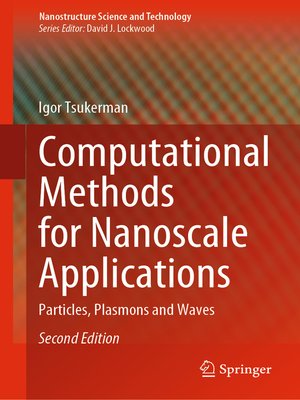Computational Methods for Nanoscale Applications
ebook ∣ Particles, Plasmons and Waves · Nanostructure Science and Technology
By Igor Tsukerman

Sign up to save your library
With an OverDrive account, you can save your favorite libraries for at-a-glance information about availability. Find out more about OverDrive accounts.
Find this title in Libby, the library reading app by OverDrive.



Search for a digital library with this title
Title found at these libraries:
| Library Name | Distance |
|---|---|
| Loading... |
This second edition of a well-received book presents new perspectives on modern nanoscale problems, where fundamental science meets technology and computer modeling. Along with traditional computational techniques such as finite-difference schemes, finite element analysis and Ewald summation, the book describes a new finite-difference calculus of Flexible Local Approximation MEthods (FLAME), which qualitatively improves the numerical accuracy in a variety of problems. Application areas in the book include long-range particle interactions in homogeneous and heterogeneous media, electrostatics of colloidal systems, wave propagation in photonic crystals, photonic band structure, plasmonic field enhancement, metamaterials, backward waves and negative refraction, cloaking, focusing beyond the diffraction limit, and transformation optics. The second edition incorporates new chapters on metamaterials and on the finite difference time domain method (FDTD), an exposition of absorbing boundary conditions, and Miscellany – a collection of paradoxical or controversial subjects related to the main topics of this book. A vast volume of material has been updated, revised or rewritten.
Computational Methods for Nanoscale Applications, Second Edition, is accessible to specialists and graduate students in diverse areas of nanoscale science and technology, including physics, engineering, chemistry, and applied mathematics. In addition, several advanced topics will be of interest to the expert reader.







